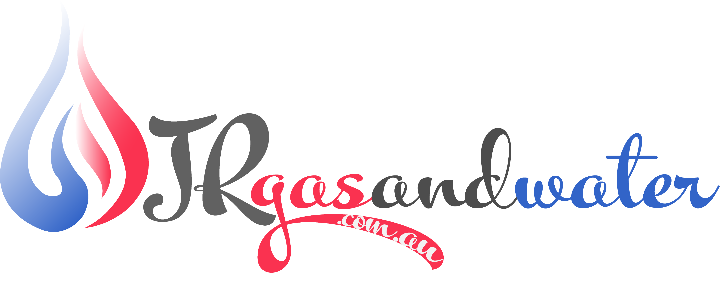Need to Add That Perfect 3-in-1 (Hot/Cold/Filtered) Mixer Tap to Your New Filtration System?
View allPuretec SOL30-E1: The Smart Choice for Energy-Efficient Hot Water in Brisbane & Gold Coast
Looking to upgrade to a more energy-efficient hot water system? The Puretec SOL30-E1 is a high-performance solar hot water system, designed to harness the power of the sun to provide reliable, cost-effective hot water for your home. Whether you’re looking to reduce your energy bills or make an eco-friendly switch, this premium system is built to perform in Australian conditions, delivering consistent hot water while lowering your household’s carbon footprint.
At JR Gas & Water, we specialize in hot water system installations across Brisbane and the Gold Coast, ensuring professional service, expert advice, and seamless installation of the SOL30-E1 for both residential and commercial properties.
Why Choose the Puretec SOL30-E1 Solar Hot Water System?
✅ Energy-Efficient & Cost-Saving – Uses solar power to heat your water, reducing reliance on electricity or gas.
✅ High-Performance Solar Technology – Designed to work efficiently even in low-light conditions.
✅ Durable & Weather-Resistant – Built to withstand Australia’s extreme temperatures and harsh climates.
✅ Environmentally Friendly – Lowers carbon emissions and reduces energy consumption.
✅ Low Maintenance & Long Lifespan – Reliable operation with minimal upkeep required.
✅ Seamless Installation – JR Gas & Water offers professional installation and expert advice to get you up and running fast.
Professional Solar Hot Water Installation with JR Gas & Water
We make switching to solar hot water easy and hassle-free. Our team ensures a smooth installation process, taking care of plumbing, gas fitting, and electrical connections to provide a fully integrated system that maximizes efficiency.
🔧 Need an Upgrade or Replacement? We can assess your current hot water system and recommend the best solar or heat pump solution tailored to your needs.
💡 Get a Quote Today! Call 1800 161 280 or visit JR Gas & Water to book your installation.
MOBILE PHONE TURN TO LANDSCAPE FOR EASY VIEWING
Brisbane's Latest Water Quality Results: What They Mean for Your Home & Health
Brisbane’s tap water is known for being clean and safe, but periodic water testing helps us understand the quality and potential impacts on health, home appliances, and plumbing systems. Here’s a breakdown of the latest test results and what they mean for you.
Brisbane Water Quality Overview (as of Feb 27 2025)
The latest water testing results for Brisbane’s mains water supply and rainwater tanks show that most parameters are within safe drinking levels. Below are the key findings, including the average and highest recorded levels:
✔️ Recommended & ❌ Unnecessary Parameters in Water
| Parameter | Average Reading | Highest Recorded | Safe Range | Ideal Range | Recommended? |
|---|---|---|---|---|---|
| pH | 7.77 | 7.90 | 5.5 - 8.5 | 7.0 - 7.5 (Neutral) | ✅ |
| Turbidity (Cloudiness) | 0.02 NTU | 0.02 NTU | 0 - 5 NTU | < 0.5 NTU (Clear water) | ✅ |
| Total Dissolved Solids (TDS) | 202.26 mg/L | 305 mg/L | 0 - 600 mg/L | 50 - 150 mg/L (Better taste & less scaling) | ✅ (Lower is better) |
| Total Hardness | 89.33 mg/L | 143 mg/L | 0 - 200 mg/L | 60 - 120 mg/L (Balanced minerals) | ✅ |
| Iron (Fe) | 0.03 mg/L | 0.03 mg/L | 0 - 0.3 mg/L | < 0.1 mg/L (No metallic taste or staining) | ❌ (Can cause rust stains) |
| Manganese (Mn) | 0.012 mg/L | 0.018 mg/L | 0 - 0.5 mg/L | < 0.05 mg/L (Prevents staining & neurological effects) | ❌ |
| Sodium (Na) | 25 mg/L | 38 mg/L | 0 - 180 mg/L | < 50 mg/L (Better taste & kidney-friendly) | ✅ |
| Chloride (Cl⁻) | 38 mg/L | 61 mg/L | 0 - 250 mg/L | < 50 mg/L (Avoids salty taste) | ❌ (Not needed in excess) |
| Sulphate (SO₄²⁻) | 24 mg/L | 42 mg/L | 0 - 250 mg/L | < 50 mg/L (Reduces laxative effects) | ❌ (Not necessary) |
| Alkalinity | 69 mg/L | 95 mg/L | No standard | 60 - 80 mg/L (Balanced acidity) | ✅ |
| Nitrate (NO₃⁻) | 0.48 mg/L | 0.9 mg/L | 0 - 11.3 mg/L | < 1 mg/L (Better for health) | ❌ (Linked to health risks in high amounts) |
| Copper (Cu) | 0.41 mg/L | 0.73 mg/L | 0 - 2 mg/L | < 0.5 mg/L (Prevents metallic taste) | ❌ (From pipes, not needed) |
| Silica (SiO₂) | 4.07 mg/L | 4.3 mg/L | 0 - 80 mg/L | < 10 mg/L (Avoids deposits on fixtures) | ✅ |
| Fluoride (F⁻) | 0.54 mg/L | 0.74 mg/L | 0 - 1.5 mg/L | 0 mg/L (Linked to lower IQ & thyroid risks) | ❌ (Unnecessary & controversial) |
| Conductivity | 316 uS/cm | 477 uS/cm | Optimal | < 400 uS/cm (Best for mineral balance) | ✅ |
🚫 Unnecessary Additives and Contaminants in Water
| Parameter | Why It’s Unnecessary or Harmful | Ideal Target |
|---|---|---|
| Fluoride (F⁻) | Added for dental health, but prolonged fluoride exposure has been linked to lower IQ in areas with high fluoridation, as suggested by multiple studies (e.g., 2019 U.S. and Canadian research). Excessive fluoride may also contribute to thyroid dysfunction and bone weakening. | 0 mg/L |
| Chloride (Cl⁻) | Often present due to chlorine disinfection or natural sources. High levels can cause a salty taste and corrosion in plumbing. | < 50 mg/L |
| Copper (Cu) | Comes from corroding pipes rather than natural water sources. High levels cause a metallic taste and potential health effects. | < 0.5 mg/L |
| Manganese (Mn) | Naturally occurring but contributes to staining, metallic taste, and potential neurological effects at high levels. | < 0.05 mg/L |
| Iron (Fe) | Can come from plumbing or groundwater. Causes staining, bad taste, and appliance buildup. | < 0.1 mg/L |
| Nitrate (NO₃⁻) | Usually from agricultural runoff. Long-term exposure is linked to potential health risks, including "blue baby syndrome" in infants. | < 1 mg/L |
| Sulphate (SO₄²⁻) | Naturally occurring but excessive amounts can have a laxative effect and cause water to taste bitter. | < 50 mg/L |
| Total Dissolved Solids (TDS) | Measures the overall mineral content. Too high can cause taste issues and appliance scaling. | 50 - 150 mg/L |
| Turbidity (Cloudiness) | Should be as close to 0 as possible for clean, pure water. | < 0.5 NTU |
| Silica (SiO₂) | Naturally occurring, but excessive levels can lead to scale buildup on appliances. | < 10 mg/L |
✔️ Naturally Present & Beneficial Elements in Water
| Parameter | Why It’s Okay | Ideal Range |
|---|---|---|
| pH | Best when neutral for taste and plumbing safety. | 7.0 - 7.5 |
| Alkalinity | Helps stabilize pH and prevent pipe corrosion. | 60 - 80 mg/L |
| Hardness (Calcium & Magnesium) | Essential minerals for health, but excessive hardness causes scaling. | 60 - 120 mg/L |
| Sodium (Na) | Naturally occurring but should be kept low for health and taste. | < 50 mg/L |
🌊 Summary: How to Improve Your Water Quality
🔹 Remove fluoride completely to avoid potential cognitive effects and thyroid risks.
🔹 Reduce chlorine and chloride for better taste and less corrosion.
🔹 Minimize heavy metals like copper, iron, and manganese for purity.
🔹 Lower TDS slightly to improve taste and appliance longevity.
Would you like filtration recommendations to achieve these water quality improvements? 🚰
✔️ Recommended & ❌ Unnecessary Parameters in Rainwater
| Parameter | Recorded Reading | Safe Range | Ideal Range | Recommended? |
|---|---|---|---|---|
| pH | 6.34 | 5.5 - 8.5 | 6.5 - 7.5 (Neutral for best taste & safety) | ❌ (Slightly acidic) |
| Turbidity (Cloudiness) | 0.02 NTU | 0 - 5 NTU | < 0.5 NTU (Clear water) | ✅ |
| Total Dissolved Solids (TDS) | 11.63 mg/L | 0 - 600 mg/L | 10 - 50 mg/L (Balanced minerals, no scaling) | ✅ |
| Total Hardness | 8 mg/L | 0 - 200 mg/L | < 50 mg/L (Soft water, prevents scaling) | ✅ |
| Iron (Fe) | 0.03 mg/L | 0 - 0.3 mg/L | < 0.1 mg/L (No staining or metallic taste) | ✅ |
| Manganese (Mn) | 0.009 mg/L | 0 - 0.5 mg/L | < 0.05 mg/L (Prevents staining & neurological effects) | ✅ |
| Sodium (Na) | 1 mg/L | 0 - 180 mg/L | < 10 mg/L (Avoids salty taste) | ✅ |
| Chloride (Cl⁻) | 1 mg/L | 0 - 250 mg/L | < 10 mg/L (Prevents corrosion) | ✅ |
| Sulphate (SO₄²⁻) | 0 mg/L | 0 - 250 mg/L | < 10 mg/L (Avoids taste & digestive issues) | ✅ |
| Alkalinity | 13 mg/L | Moderate | 20 - 50 mg/L (Balanced pH stability) | ❌ (A bit low) |
| Nitrate (NO₃⁻) | 0.72 mg/L | 0 - 11.3 mg/L | < 1 mg/L (Prevents health risks) | ✅ |
| Copper (Cu) | 2.24 mg/L | 0 - 2 mg/L (Exceeds limit) | < 0.5 mg/L (Prevents metallic taste & toxicity) | ❌ (Too high, likely from pipes) |
| Silica (SiO₂) | 0.1 mg/L | 0 - 80 mg/L | < 10 mg/L (Avoids deposits on fixtures) | ✅ |
| Fluoride (F⁻) | 0.59 mg/L | 0 - 1.5 mg/L | 0 mg/L (Not needed; linked to lower IQ & thyroid issues) | ❌ (Should be removed) |
| Conductivity | 18.17 uS/cm | Optimal | 10 - 100 uS/cm (Indicates low impurities) | ✅ |
🚫 Unnecessary Contaminants in Rainwater
| Contaminant | Why It’s Unnecessary or Harmful? | Ideal Level |
|---|---|---|
| Fluoride (F⁻) | Not naturally present in rainwater. Studies (Harvard, U.S. EPA) link prolonged fluoride exposure to lower IQ, thyroid dysfunction, and skeletal issues. | 0 mg/L |
| Copper (Cu) | Exceeds safe limit. Likely from corroding pipes or roofing. High levels can cause metallic taste and health risks. | < 0.5 mg/L |
| pH (Acidic Water) | Slightly too low. Acidic water can cause pipe corrosion and leach metals like copper into the water. | 6.5 - 7.5 |
| Alkalinity | Low alkalinity can make water unstable and prone to pH fluctuations. | 20 - 50 mg/L |
Home and Plumbing Impacts
🔹 Total Hardness (8 mg/L in rainwater): Extremely soft water, which can be corrosive to pipes, leading to potential metal leaching from plumbing.
🔹 Iron & Manganese (Rainwater: Iron 0.03 mg/L, Manganese 0.009 mg/L): Low but can cause sediment buildup over time if not filtered.
🔹 Copper (2.24 mg/L in rainwater): High levels may indicate corrosion in metal roofing or pipes, leading to health and plumbing concerns.
Should You Use a Water Filtration System?
For both mains and rainwater users, filtration is essential to ensure clean, safe drinking water. Here’s what we recommend:
✅ For Rainwater Users:
-
Puretec Hybrid G Series: Great for sediment, bacteria, and chlorine removal (if rainwater is treated).
-
Puretec Reverse Osmosis (RO) System: Removes copper, fluoride, and dissolved contaminants.
-
Puretec Filter Wall System: A high-flow system for whole-house filtration.
✅ For Mains Water Users:
-
Puretec X3 or Z1 Series: Best for drinking water filtration.
-
Puretec Reverse Osmosis (RO) System: Removes fluoride and heavy metals.
- Puretec Filter Wall System: A high-flow system for whole-house filtration.
Want to improve your water quality? Check out our Puretec Water Filtration Solutions at JR Gas & Water! 🚰💧











